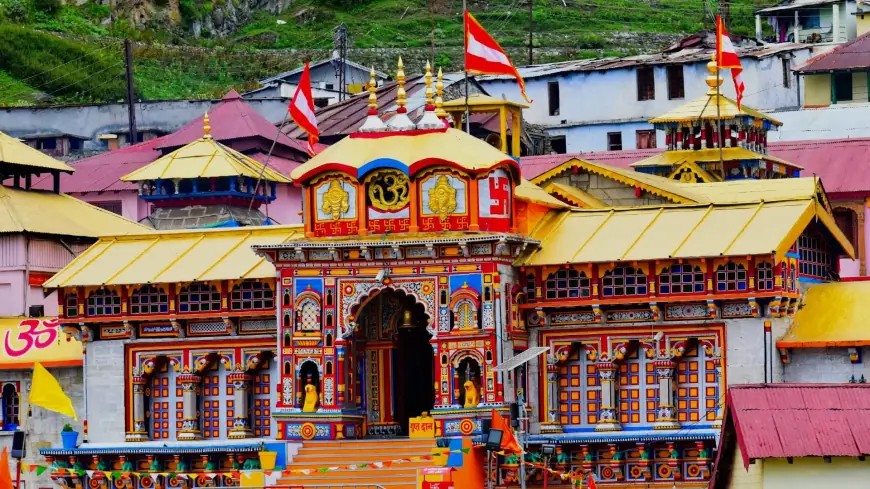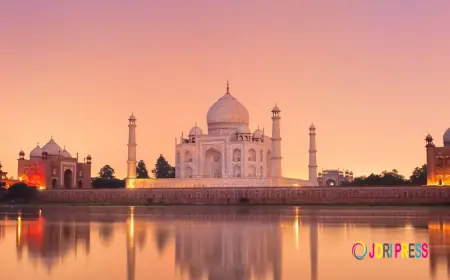Best Time to Visit for Badrinath Yatra: Month-Wise Breakdown

When it comes to the sacred pilgrimage of badrinath yatra, timing can make all the difference between an average journey and a truly divine experience. Tucked high in the Garhwal Himalayas, Badrinath Temple stands not just as an architectural marvel but as a timeless destination for devotees and travelers seeking spiritual peace. But what really is the best time to plan your badrinath yatra? Let’s dive into a month-wise breakdown so you can choose wisely, balancing weather, festivals, and crowd factors.
At 4dhamyatra, we understand that every pilgrim’s journey is unique, which is why this detailed guide is here to help you plan a memorable badrinath yatra.
April: The Awakening of the Yatra
The Badrinath Temple usually opens by late April or early May after the winter closure. April sees the snow beginning to melt, revealing fresh landscapes, while the air is still chilly. The temperature ranges from 5°C to 15°C.
It’s a magical time, with fewer crowds and a serene environment perfect for those who enjoy peace and spirituality. Roads may still have some residual snow, so be prepared for occasional delays or route changes.
May: Comfortable Start to the Season
May is when the Badrinath Yatra season truly kicks off. Weather becomes more pleasant, with temperatures between 8°C to 18°C. This is an ideal month for devotees looking to combine devotion with sightseeing.
You’ll witness lush valleys, snow-capped peaks, and the holy Alaknanda River flowing with renewed vigor. It’s also a great time to club your Badrinath Yatra with gangotri tour packages, as Gangotri Temple also opens around the same time, allowing pilgrims to visit two sacred sites in a single journey.
June: Peak Pilgrimage Period
June is the busiest month of the Badrinath Yatra. Pleasant weather, clear skies, and fully accessible routes attract thousands of pilgrims daily. Average temperatures hover between 10°C and 20°C, perfect for travel.
Because it’s peak season, it’s advisable to make bookings well in advance. At 4dhamyatra, for instance, travelers often reserve their complete Chardham packages months before June to avoid last-minute hassle.
July & August: The Monsoon Challenge
The months of July and August bring the monsoon rains to the Himalayas. While the landscape turns lush and beautiful, landslides and roadblocks are common challenges.
Temperatures stay comfortable (12°C to 17°C), but heavy rainfall can disrupt plans. Those considering the Badrinath Yatra during these months should remain flexible and stay updated with weather advisories. Travel insurance and extra caution become especially important.
For many, this isn’t the best time for the Yatra unless they’re deeply committed and prepared for unpredictable delays.
September: The Calm After the Rain
September marks a beautiful transition. The rains recede, skies clear, and the entire region appears freshly washed and vibrant. Temperatures range between 10°C and 18°C.
This month sees fewer crowds compared to June, making it a perfect balance between pleasant weather and spiritual serenity. It’s also another great time to combine the Badrinath Yatra with gangotri tour packages, as the roads leading to Gangotri become more stable after monsoon.
October: Tranquility Before Winter
October is the final month before Badrinath Temple closes for winter. Temperatures begin to drop (5°C to 15°C), and nights can be especially cold.
However, this is also when the spiritual atmosphere feels most intense. The changing colors of autumn add a mystical charm to the Badrinath Yatra, with golden leaves and snow-dusted peaks creating postcard-perfect views.
Travelers who enjoy peaceful pilgrimages and don’t mind colder weather often find October deeply fulfilling.
November to March: Temple Closed for Winter
From November to March, the Badrinath Temple remains closed due to heavy snowfall and harsh winter conditions. During this period, rituals continue at the Narasimha Temple in Joshimath, where the idol is moved temporarily.
Travel is not advised during these months, as roads become impassable and temperatures can plunge well below freezing.
Choosing the Best Month for You
While each season offers a unique experience, the best months for the Badrinath Yatra are generally May, June, September, and early October. These periods offer better weather, scenic beauty, and safer travel conditions.
For those who love vibrant energy, June stands out. For those seeking quiet devotion, May and September are often preferred.
Essential Tips for a Smooth Badrinath Yatra
-
Book early: Especially if you’re traveling during peak months.
-
Check the opening and closing dates: These can vary each year.
-
Stay weather-aware: The Himalayas are unpredictable; always check forecasts.
-
Travel light but wisely: Pack warm clothes, rain gear, and basic medicines.
-
Consider trusted service providers: Companies like 4dhamyatra help manage accommodations, transport, and even combinations with gangotri tour packages for a complete pilgrimage experience.
Final Thoughts
The Badrinath Yatra is not just about reaching a temple; it’s about a soulful journey through time, faith, and breathtaking nature. Timing your visit right ensures your journey is safe, serene, and spiritually fulfilling.
Whether you’re planning your first Badrinath Yatra or revisiting its timeless charm, understanding the month-wise breakdown helps you make the most of your experience. And with guidance and support from experienced travel partners like 4dhamyatra, you can focus less on logistics and more on your spiritual journey.
No matter when you choose to go, the sacred aura of Badrinath, the mighty Himalayas, and the devotion that surrounds the place will make your Yatra truly unforgettable.
What's Your Reaction?
 Like
0
Like
0
 Dislike
0
Dislike
0
 Love
0
Love
0
 Funny
0
Funny
0
 Angry
0
Angry
0
 Sad
0
Sad
0
 Wow
0
Wow
0




















































